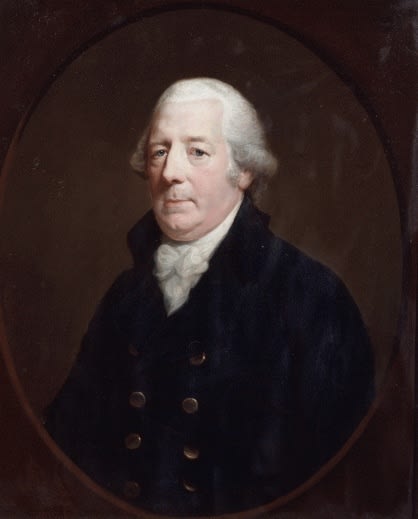
Hugh Douglas Hamilton
To view all current artworks for sale visit philipmould.com
Hugh Douglas Hamilton was trained at the Dublin Society’s Schools between 1750 and 1756 by Robert West, and was frequently a winner of prizes. West was renowned as ''one of the most accomplished draughtsmen in Europe'', and so it need not be surprising that the earlier part of Hamilton’s career was devoted to producing portraits drawn in pastel. There may well have been more necessary reasons for this choice, since it enabled him to build up a large clientele without competing with his more established, oil-painting contemporaries such as Nathaniel Hone. By the 1770s when the artist had moved to London his practice was described as ''extensive and fashionable''.
As with so many painters, it was not until he visited Italy in 1779 that he began to explore the true potential of his talent. Italy afforded him the opportunity to meet other artists as well as to make the acquaintance of cultivated patrons, such as the Earl Bishop of Derry. He remained in Italy until 1792, becoming the close friend of men such as Antonio Canova and John Flaxman. The latter is often credited with encouraging Hamilton to pursue painting in oils, but in fact he had produced a Diana and Endymion and a celebrated series of Stuart portraits before Flaxman arrived in Rome in 1788.
When Hamilton returned to Dublin in 1792 he had been away in Rome for nearly thirteen years, during which time he had portrayed the exiled Prince Charles Edward Stuart and his daughter the Duchess of Albany, and notable British and Irish Grand Tourists -including Lord Boyle and the Earl Spencer. He had also gained good experience of the effects and practice of oil painting, which he set about in Dublin on his return.
Between 1792 until his retirement in 1804 Hamilton portrayed many of the most important figures in Irish public life, from John FitzGibbon the Earl of Clare, agent of the 1800 Union, to the failed revolutionary Lord Edward Fitzgerald. Nicholas Barnewall, 14th Lord Trimlestown, was of a family that had been prominent ion Ireland since the Middle Ages and had received their peerage in 1461 from Edward IV. They had not always been fortunate in their allegiances, however, and no gazette makes reference to a Lord Trimlestown between 1691 and 1795, as the title was under attainder for the delinquency of the tenth Lord, who had served King James II at the Battle of the Boyne in 1790.
The succession of the fourteenth Lord marked an upturn in the fortunes of the Barnewall family. He inherited the title and estates in 1796, a year after the attainder was reversed, from a cousin, being himself the grandson of the eleventh peer. Through his mother, the second daughter and heiress of the last Viscount Barnewall of Kingsland, he also inherited the considerable estates of that related title. Conscious of the need to secure these possessions against further vagaries in his family line, he entailed them on his distant cousin, Richard Barnewall of Fyanstown, in the event of a failure in his direct line: the wisdom of this emerged in 1879, when the title and estates passed to Richard Barnewall's great-grandson, the 17th Lord.
Before succeeding to the title Nicholas Barnewall spent some time in France - certainly he was in Toulouse as late as 1773 for the birth of his second son - where he married in 1768 as his first wife Martha Henrietta, the only daughter of Joseph D'Auguin, President of the Parliament of Toulouse. She died in 1782, having given birth in 1770 to a son who predeceased his father- and Lord Trimlestown remarried in 1797 at the age of seventy-one. His new bride, Alicia, daughter of Lieutenant General Charles Eustace of Robertstown, County Kildare, was only twenty-three. Scandalmongers may have been delighted when at the death of Lord Trimlestown in 1813 he left a considerable estate to his widow to the exclusion of his son and heir by the first marriage.